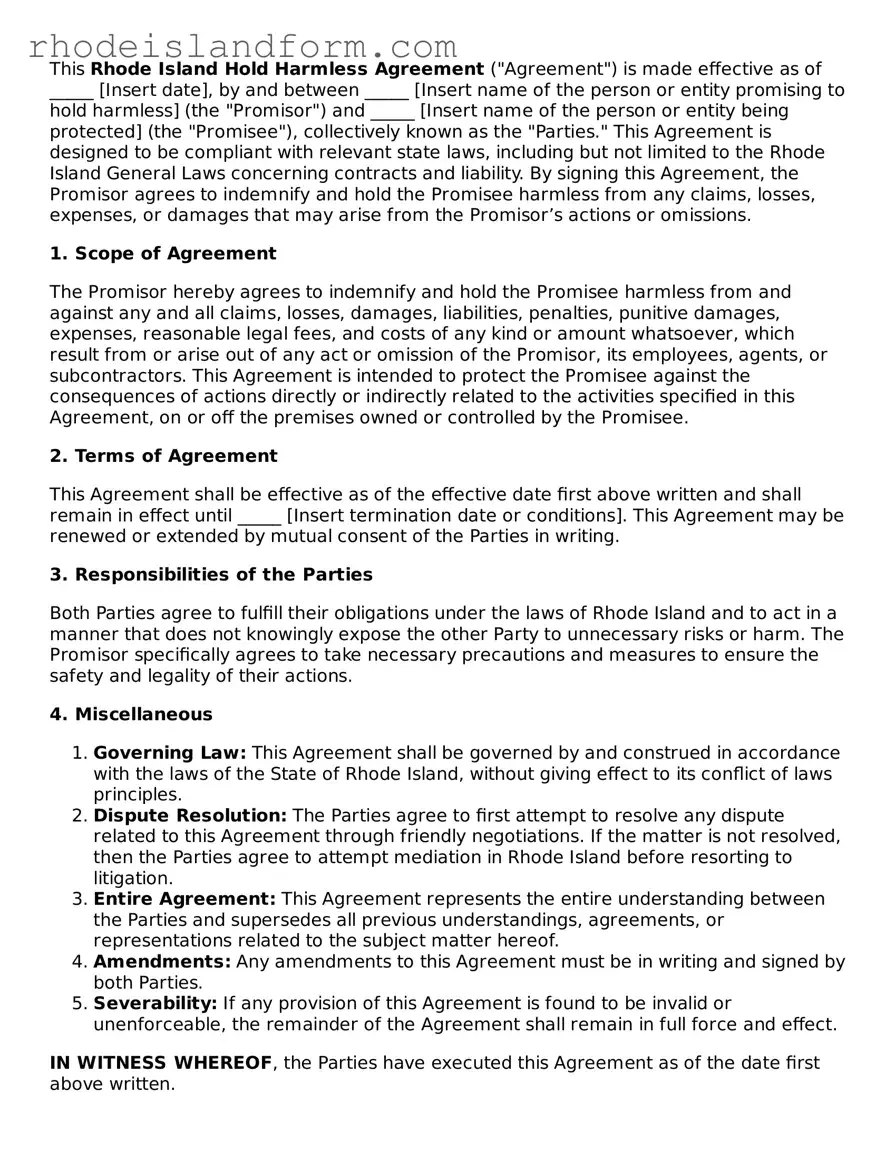What is a Hold Harmless Agreement in Rhode Island?
A Hold Harmless Agreement in Rhode Island is a legal document that one party uses to protect themselves from legal claims, liabilities, or losses in the event of an accident or unforeseen incident. It effectively shifts the risk from one party to another, typically used in business relations, property use, or where services are provided.
Who needs to sign a Rhode Island Hold Harmless Agreement?
This agreement must be signed by both the party seeking protection (the indemnitee) and the party agreeing to take on the liability (the indemnifier). This ensures that both parties have acknowledged the terms and understand their roles and responsibilities under the agreement.
When should a Hold Harmless Agreement be used in Rhode Island?
It is wise to use this agreement in any situation where there’s potential for financial loss, damages, or any legal claims arising from an activity, service, or use of property. Common scenarios include construction projects, events held on personal property, professional services, and any situation where one party desires protection from potential legal action.
Are Hold Harmless Agreements legally enforceable in Rhode Island?
Yes, in Rhode Island, Hold Harmless Agreements are generally enforceable, provided they are clearly written, the signatories have a clear understanding of the agreement, and it does not involve any illegal activities. However, its enforceability can be subject to the specifics of the agreement and circumstances around the signing.
What should be included in a Rhode Island Hold Harmless Agreement?
The agreement should distinctly identify the parties involved, detail the scope of activities covered, clearly define the obligations and rights of each party, include the duration for which the agreement is valid, and be signed by both parties. Clarity and specificity are crucial to its effectiveness and enforceability.
Can a Hold Harmless Agreement be modified after signing?
Yes, modifications can be made to the agreement after it has been signed, provided that both parties agree to the changes. Such modifications should be made in writing, clearly stated, and signed by both parties, similar to the original agreement, to ensure that the changes are legally binding.
Does a Hold Harmless Agreement cover all types of liabilities in Rhode Island?
No, a Hold Harmless Agreement may not cover all types of liabilities. The coverage is dependent on the wording of the agreement. It generally covers scenarios explicitly defined within the agreement. However, liabilities arising from negligence or intentional harm by the protected party are typically not covered.
Where can I obtain a Hold Harmless Agreement form for Rhode Island?
Hold Harmless Agreement forms specific to Rhode Island can be obtained through legal assistance services, online legal form providers, or by consulting with a legal expert specializing in Rhode Island law. Ensure that the form meets state-specific requirements and is tailored to the specific situation for which it is needed.
